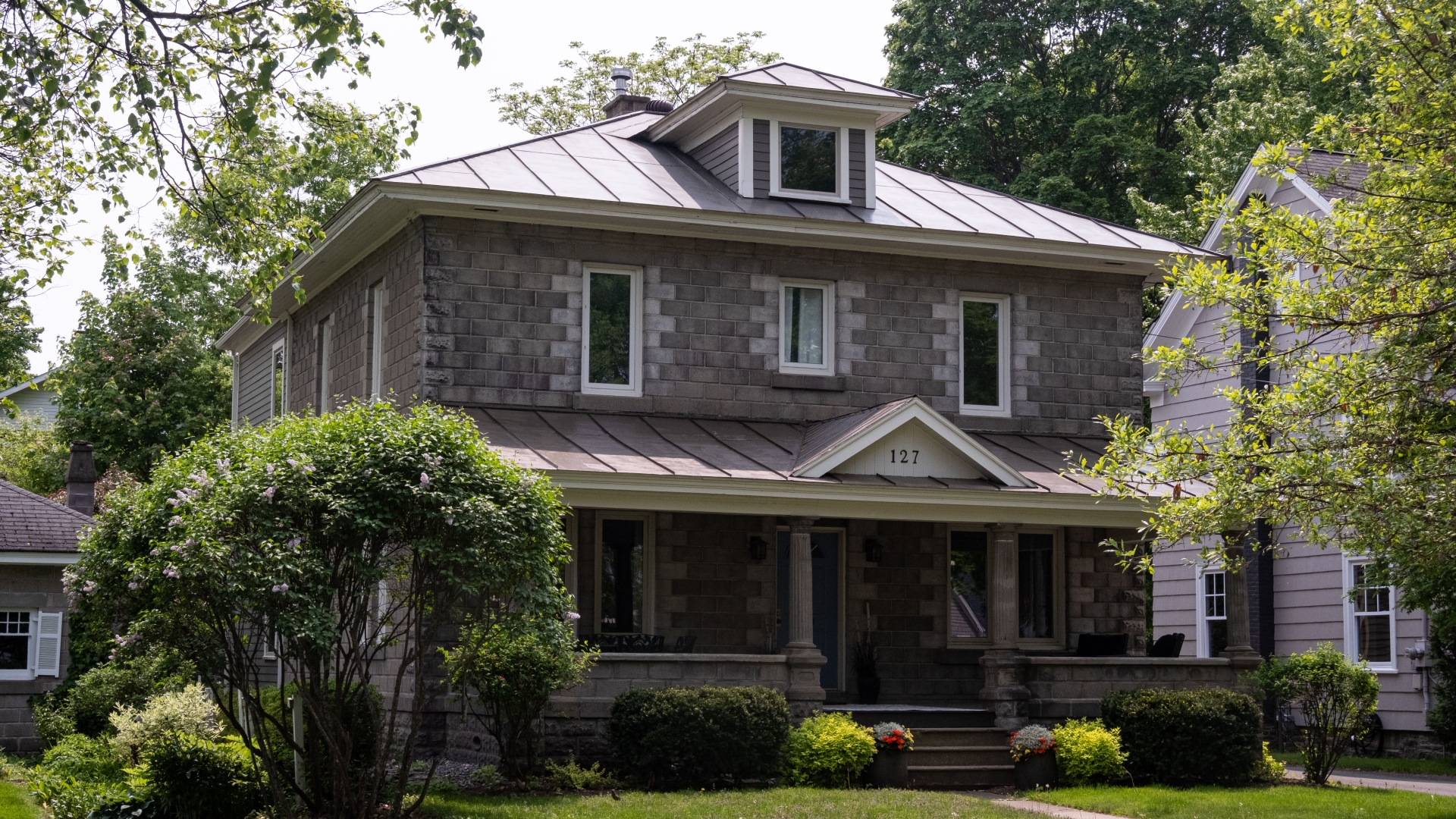The concrete block house, completed by the early 1920s, fronts on the south side of Lansdowne Street, near the corner of Waterloo Row. The 2-storey dwelling is situated on a small portion of the former Rose Hall property, a significant Loyalist land grant.
Heritage Value
This dwelling is recognized not only for its building material, but for its situation upon the outer limit of the former Rose Hall property. Concrete block was an affordable building material, and houses constructed of this material often reflect a response to the local economic climate or a shortage in available building supplies.
In 1791, Colonel Jacob Ellegood acquired several substantial lots along Waterloo Row, south of what would become Lansdowne Street. Ellegood, a Loyalist, named this property Rose Hall after his plantation in Virginia. The Rose Hall property along Waterloo Row remained intact until the 1880s, at which time the land was divided and parcels sold.
In 1905, Areta B. Gerow purchased a substantial lot of the Rose Hall land situated along Lansdowne Street, which stretched from Waterloo Row to Winslow Street. Areta B. Gerow, originally from Queens County, moved to Fredericton with her family as a youth. She trained as a nurse, working in New York hospitals for many years before returning to Fredericton. Miss Gerow had accumulated considerable real estate holdings in Fredericton, and this lot along Lansdowne was carved into building lots and developed during the late 1910s and early 1920s.
Character-Defining Elements
The character-defining elements associated with the concrete block house located at 127 Lansdowne Street include:
-
2-storey concrete block construction;
-
its situation upon a large, open lot;
-
low-pitched hip roof;
-
central dormer;
-
regularly spaced rectangular windows;
-
open front porch supported by cast columns;
-
triangular pediment surmounting porch entrance.


